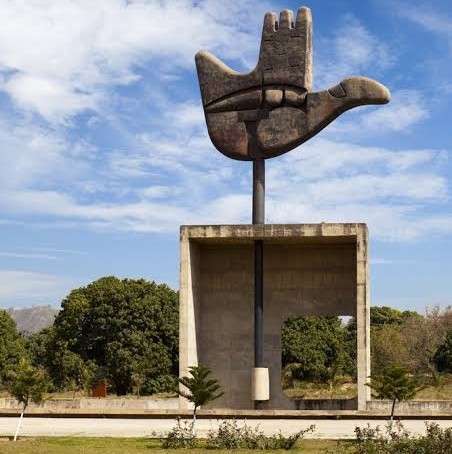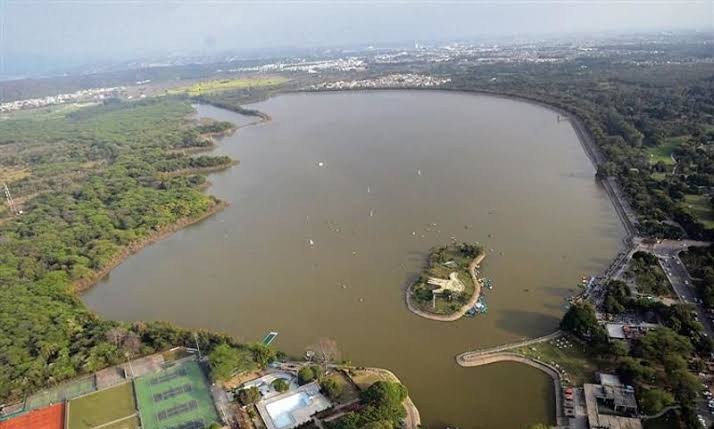Chandigarh – The City Beautiful

🏛️ Introduction
Chandigarh, the capital of both Punjab and Haryana, is a well-planned city located in northern India. It was designed by the famous French architect Pierre Jeanneret under the guidance of Le Corbusier, and is known for its modern architecture and well-organized urban layout.
📍 Picturesquely located at the foothills of Shivaliks, Chandigarh derives its name from the temple of "Chandi Mandir" located in the vicinity of the site selected for the city.
Chandigarh is a Union Territory, and it is renowned for its green spaces, wide roads, and clean environment. It is also an important cultural, educational, and commercial hub.
Attractions such as the Rock Garden and Sukhna Lake draw tourists and locals alike.
📌 Chandigarh is divided into 56 sectors, each designed as a self-contained neighborhood.
🗺️ Basic Facts
|
Attribute |
Details |
|
Area |
114 sq. kms |
|
Longitude |
76°47′14″E |
|
Latitude |
30°44′14″N |
|
Altitude |
304–365 meters above MSL |
|
Drainage Gradient |
1% |
🏞️ Geography
The Union Territory of Chandigarh is located in the foothills of the Shivalik hill ranges. It features:
- Kandi (Bhabhar) in the northeast
- Sirowal (Tarai) and alluvial plains elsewhere
The land is composed of boulders, pebbles, gravel, sand, silt, clay, and kankar.
🌀 Seasonal rivulets:
- Sukhna Choe in the east
- Patiala-Ki-Rao Choe in the west
- N-Choe and Choe Nala flow through the central area
🌡️ Temperature Overview
Summer (March to June)
- 🌡️ 28°C to 40°C
- Hot, dry; pleasant mornings/evenings
Monsoon (July to September)
- 🌡️ 25°C to 35°C
- High humidity; heavy rains
Autumn (October to November)
- 🌡️ 20°C to 30°C
- Pleasant, low humidity
Winter (December to February)
- 🌡️ 5°C to 20°C
- Cool, foggy mornings, sunny days
💧 Humidity Profile
|
Season |
Humidity Range |
Highlights |
|
Summer |
30% – 60% |
Moderate, increases in June |
|
Monsoon |
70% – 90% |
High; sticky and damp |
|
Autumn |
50% – 70% |
Comfortable, low humidity |
|
Winter |
30% – 60% |
Dry and crisp; foggy mornings |
🌧️ Rainfall Distribution
Monsoon (July–September)
- 🌧️ 1,000–1,200 mm annually
- July–August are the wettest
- Frequent thunderstorms
Pre-Monsoon (April–June)
- Low rainfall, occasional showers
Post-Monsoon (October–November)
- Sharply reduced rainfall
Winter (December–February)
- Light and scattered rainfall (20–40 mm/month)
Monsoon skies over Sukhna Lake
🌬️ Winds and Atmospheric Pressure
|
Season |
Wind Speed |
|
Pre-Monsoon |
6–9 mph |
|
Monsoon |
~7 mph |
|
Post-Monsoon/Winter |
3–5 mph |
Atmospheric Pressure
- Annual Avg: 1009 hPa
- Highest: 1019 hPa in January
- Lowest: 997 hPa in July
🌱 Soil and Vegetation
- Soil Type: Alluvial (rich, fertile), Loamy (well-drained)
- pH Level: Slightly alkaline to neutral (7.0–8.0)
🌳 Vegetation Supported:
- Deep-rooted trees: Neem, Peepal, Banyan
- Flowering plants: Gulmohar, Amaltas
- Shrubs & Ornamentals: Ideal for green landscaping
📍 Closing Note
Chandigarh stands as an exemplary model of urban planning, ecological balance, and cultural vibrancy. With its clean environment, scenic landscapes, and thoughtfully designed infrastructure, it lives up to its name – The City Beautiful.


Leave A Comment